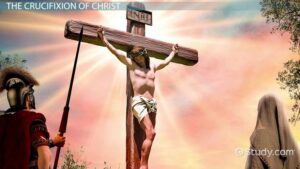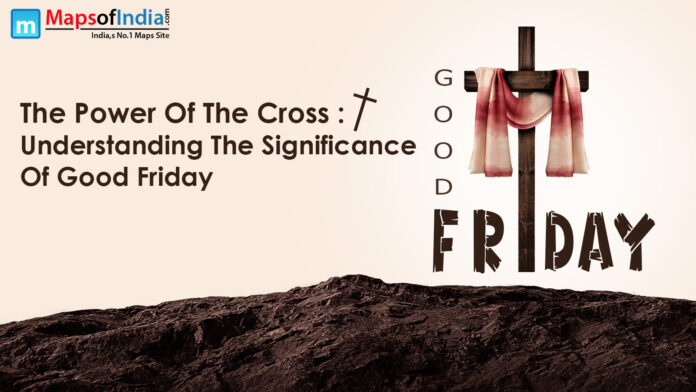The Power of the Cross: Understanding the Significance of Good Friday
Good Friday holds deep and universal importance as it represents the power of the cross—Understanding the significance of Good Friday is also crucial as it stands as a symbol of profound love, sacrifice, and hope. Observed around the world, this solemn day honors an event that forever changed the course of history: the crucifixion of Jesus Christ.
More than just a religious observance, Good Friday invites reflection on the meaning of faith and redemption. Rooted in a history over 2,000 years old, it is a key part of Holy Week and a cornerstone of Christian belief. The cross is not merely an image; it carries the weight of Christ’s suffering and the promise of salvation.
From a biblical perspective, Good Friday is a powerful expression of God’s love for humanity, highlighting the belief in salvation through Jesus’ ultimate sacrifice. It encourages believers to reflect on their faith while also uniting communities in shared remembrance.
In essence, Good Friday stands as a bridge between the personal and the spiritual, the historical and the eternal—a day that continues to inspire faith, humility, and hope across the globe.
The Historical Context of Good Friday
Good Friday marks the day Jesus was crucified. The story takes place nearly 2,000 years ago in Jerusalem. It happened during the Jewish holiday of Passover. The Romans, who ruled the land, carried out the execution. The event became a key moment in Christian belief. People worldwide observe this day through prayer and reflection. Over the centuries, Good Friday has grown into a day of solemn commemoration. Its roots tie back to early Christian practices and traditions. The day reminds followers of sacrifice and redemption. Many rituals and services have been added over time. Despite differences, the core meaning stays the same.
The Events Leading Up to the Cross
On the final day of Jesus’ life, he wandered to Jerusalem to celebrate passover. A lot of people saw him as a king, but the religious leader felt endangered. His teaching resisted their authority, and worries grew. Jesus’ arrested, trial , and eventual crucifixion happened within a week known as Passion Week. This time became central to Christian faith because it marked Jesus’ sacrifice for humanity’s sins.
The Crucifixion: Reality and Ritual
The hanging was a cruel punishment for state opponents and offenders in ancient Rome. The process involved nailing or tying a person to a wooden cross, leaving them to die slowly. Archaeological discoveries, like fragments of ancient crosses, and writings from historians such as Tacitus help confirm the historical reality. Crucifixion, a gory spectacle meant to inspire dread, was used as a deterrent in the Roman Empire.
The Impact on First Century Society
The death of Jesus shocked a lot of people. Some mourned, while some raised questions about what it meant. A limited group of devotees, known as early Christians, began to spread his message after his death. Their stories played a key role in creating a new and lasting faith centered around Jesus as the Savior. These stories, shared widely among early followers, demonstrated how Jesus’ life, teachings, and the miracles he performed offered hope and salvation to many. As the stories spread from person to person, they helped shape a new belief system that recognized Jesus as the messiah sent by God to save humanity from sin. This shift in faith marked a turning point, as more people began to see Jesus as their spiritual leader and source of forgiveness. The events that followers told about—his crucifixion, resurrection, and teachings—became powerful symbols of faith and hope for generations. These stories did not stay confined to a small circle; they ignited the growth of communities and religious movements across different regions. Over time, the belief in Jesus as the Savior led to the formation of various churches, denominations, and traditions that continue to spread his message today.
This new faith was more than just a spiritual change. It influenced social behavior and cultural beliefs as well. Early followers organized acts of charity, built places of worship, and developed rituals based on the stories of Jesus’ life. These actions, inspired by their faith, helped shape the moral values of entire societies. Even over centuries, this influence can be seen in laws, holidays, and social attitudes, many of which have roots in the teachings of Jesus. Today, this faith continues to inspire millions worldwide. It helps shape their way of life and how they see their place in the world. The stories of Jesus have proved to be powerful tools for bringing hope, inspiring kindness, and fostering community. They act as a foundation for personal faith as well as social change, showing how a single set of stories can have a lasting impact that reaches far beyond their original context.
The Cross as a Symbol of Sacrifice and Salvation
The cross is fundamentally about sacrifice. Jesus’ death is regarded as the pinnacle of love, providing everyone with salvation. Scriptures such as John 3:16, which states, “Because God loved the world so much that he gave his only Son,” highlight this. According to Romans 5:8, atonement is made possible by Christ’s death on the cross for our sins. For believers, the promise of redemption is found on the cross.
The Cross and God’s Love
The cross is seen by many theologians as the pinnacle of divine love. Augustine referred to it as the manifestation of God’s readiness to endure suffering in order to rescue humanity. For Aquinas, it was an indication of God’s kindness. The cross serves as a reminder of God’s commitment to us and is more than just a symbol for believers. It inspires us to put our faith in His forgiveness and kindness.
The Power of Resurrection and New Life
Easter Sunday, when Jesus rose from the dead, comes directly after Good Friday. His resurrection offers comfort and hope that life goes on beyond death. The cross is a symbol that life triumphs over death and is a forerunner to fresh starts. Many Christians find that their belief in resurrection gives them courage in trying times and encourages them to be renewed every day.
The Cross as a Call for Justice and Compassion
The sacrifice on the cross pushes us toward justice and mercy. It reminds us to serve others with humility and to stand up for what’s right. Movements for peace, reconciliation, and charity often draw inspiration from Jesus’ life and death. We can make a difference by showing love and offering forgiveness in difficult situations.
The sacrifice on the cross pushes us towards justice and empathy. It recalls to serve others with humility and to take a stand for right. Movements for peace Jesus’ life and death serve as a common source of inspiration for charity and reconciliation.
The Cross and Interfaith Dialogue
Though mainly a Christian symbol, many faiths recognize themes like sacrifice and renewal. These shared values provide a foundation for respectful conversations about Good Friday’s meaning. Discussions rooted in understanding and shared ideals can build bridges across different beliefs.
Conclusion
The cross remains a powerful symbol of sacrifice, love, and hope. It holds deep meaning in history, faith, and culture. Good Friday reminds us of a love that changed the world, offering us a chance to reflect and act. As we think about its significance, may we find strength and purpose in its message of renewal. Let the power of the cross inspire us to live with compassion, hope, and the belief that love has the final word.




